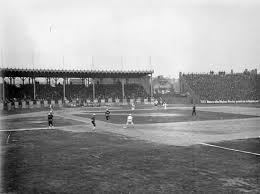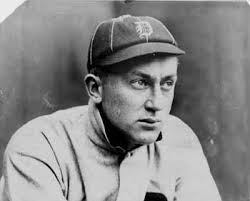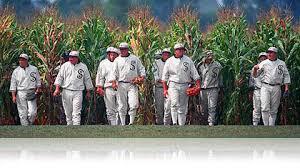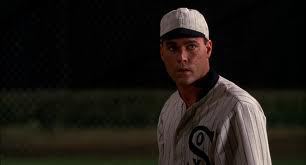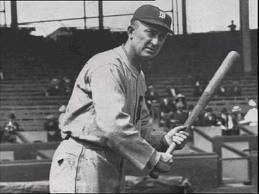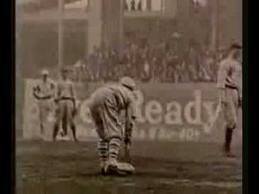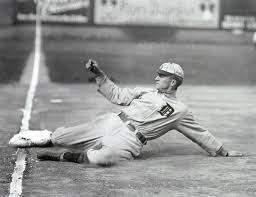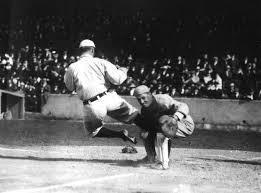Swinging for the Fences (Or, I Will Not Be Pigeonholed)
On the afternoon of May 5, 1925, in St. Louis’ Sportsman’s Park, legendary Detroit Tiger Ty Cobb sat beside a sportswriter in the dugout before the game between the Tigers and the old St. Louis Browns.
“I’ll show you something today,” Cobb, then in the twilight of his playing days, at the age of thirty-eight, said. “I’m going for home runs for the first time in my career.”
This was a bold proclamation for the player nicknamed The Georgia Peach, to this day the all-time leader in career batting average, at .366.
For years, Cobb had tormented opposing pitchers with his seemingly robotic ability to hit safely and reach base.
One of the game’s great competitors and nastiest personalities, the left-handed batter was almost universally disliked leaguewide.
Cobb’s reputation even followed him into the film Field of Dreams, a full sixty years after his playing days were over. In one scene, when Iowa farmer Ray Kinsella talks with the legends of yesteryear, who magically appear in his cornfield, Shoeless Joe Jackson tells him, “Ty Cobb wanted to play, but none of us could stand [him] when we were alive, so we told ‘im to stick it!”
Cobb’s batting prowess was legendary. He led the league in hitting twelve times in a thirteen-year span from 1907 through 1919, and hit over .400 three times in his career. But while he did have extra-base power–his 724 career doubles rank 4th all time, and his 295 career triples rank second–Cobb was never a home run hitter. His career best was 12, which he accomplished twice.
To put that in context, it is important to note Cobb played the majority of his career in the “dead ball era,” where pitchers were allowed to throw spit balls, umpires rarely changed balls during the course of the game, and home runs were an afterthought. In fact, in 1909, Cobb led the American League in homers with just 9. It was a different game, one that valued stolen bases and fielding, sacrifice bunts and smarts. This was the game Cobb grew up in, and the way he loved to play.
By 1925, when he sat in the dugout that spring day and claimed he was going to try to hit home runs for the first time in his career, the game had changed drastically. Babe Ruth had come along, hitting home runs at a record pace. In 1920, Ruth had smashed 54 homers; in 1921, 59–numbers that, at the time, seemed superhuman.
Deep down, The Georgia Peach seethed. He hated the long-ball game of Ruth. He didn’t believe that was the way baseball was meant to be played.
But on May 6, 1925, he had a point to prove. If he wanted to swing for the fences, if he wanted to emulate the Babe–he could.
“Just you wait,” he said. “Just watch.”
****************
Ernest Hemingway once said, “When writing a novel a writer should create living people; people not characters. A character is a caricature.”
When I think of caricatures, I think of one-dimensional characters who, by their very presence, are mere devices to drive a plot one way or the other. It can be the larger-than-life hero who shows no weakness, cries no tears, and goes through the rigors and dangers of a daring adventure as if strolling through the park on a lazy summer afternoon.
It can be the villain, evil to the core, who exists for the sole purpose of sowing seeds of death and destruction–and to serve as the foil for the protagonist. We can see no shred of light, no ounce of compassion or goodness in this villain. There is only the dark side–on every page.
The trouble with characters like these is obvious. Real people just don’t operate this way. Every hero cries at some point and has moments of weakness and doubt, not to mention a closet full of skeletons. They may not always be tabloid material (though they certainly can be), but they do exist. Every villain has a gentler side. No one is 100% rotten to the core. The same person who commits armed robbery one day does something selfless for someone they love on another. It’s hard, and unfair, to place people in neat little boxes, labeled “Hero” or “Villain” or “Greedy” or “Altruistic.”
To steal a popular title, people are (at minimum) fifty shades of gray.
In The Eye-Dancers, it would be easy to label Mitchell Brant as the liar and storyteller, Ryan Swinton as the comedian, Joe Marma as the fighter, and Marc Kuslanski as the glasses-wearing nerd. Certainly, at the beginning of the novel, this is how the characters are presented. But it’s my hope that, as readers get to know them, and enter into their thoughts and fears, their hopes, their insecurities and self-doubts, the characters emerge multi-faceted, not so easily pigeonholed into a tight, snug corner. Also, over the course of the story, the boys must confront challenges and situations that force them to view the world in a different light, to look in the mirror and determine whether or not they like what they see.
In short, they have to grow and adapt and overcome. What results, I hope, are real people, not caricatures.
******************
Ty Cobb hit three home runs that day, and two more the next–making good on his promise to “show them something.” It was a brief flourish of power, a blip on the radar screen of his career built on speed, guile, and precision.
Nevertheless, he had proved his point. He wasn’t going to allow himself to be labeled as a “singles hitter,” a relic of the dead-ball era who couldn’t adapt to the changing conditions of 1920s baseball. He could adapt if he wanted to. He just chose not to. He believed the game should be played a certain way, the old way, and that’s exactly how The Georgia Peach went about it.
But for two days in May 1925, Ty Cobb went against the grain and stepped way outside of his comfort zone, showing a dimension of himself and his abilities previously unseen and unheard of.
A good fictional character should be able to do the same.
Thanks so much for reading!
–Mike



